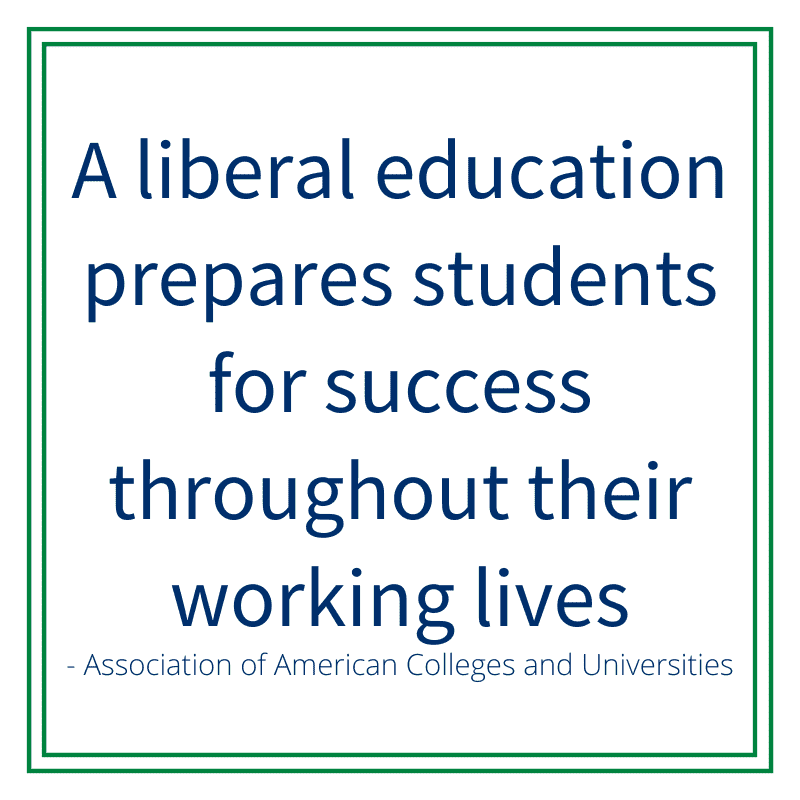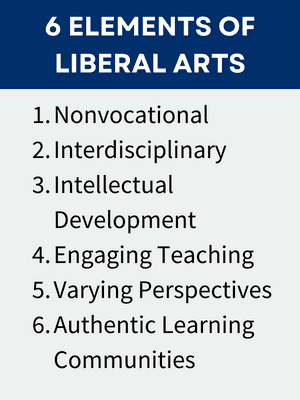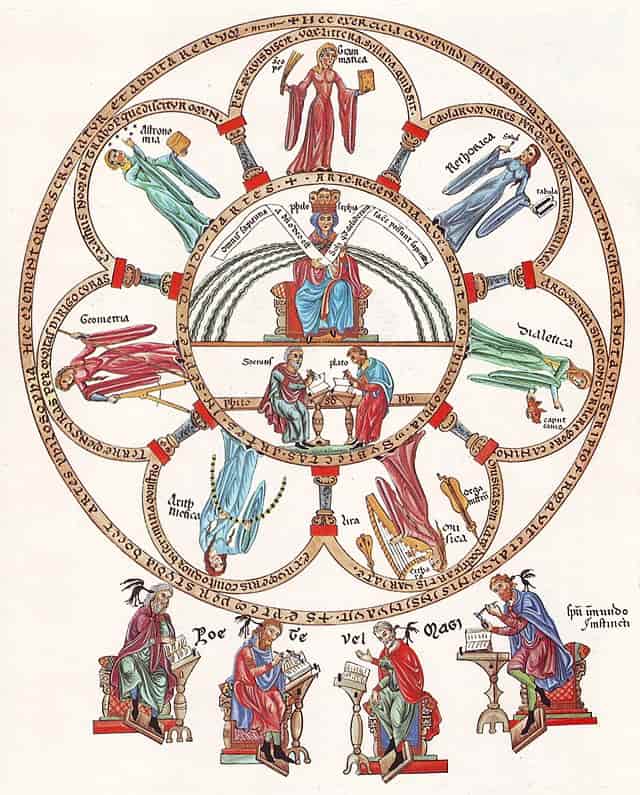
Benefits of a Liberal Arts Degree
Students who pursue a liberal arts education can change the world. Some liberal arts majors go on to become CEOs of companies like Netflix and Chipotle. Others can become impactful politicians, artists, teachers, and social activists. In fact, students who study in a liberal arts tradition tend to have more qualities that employers are looking for.
Though they lack the broad support they once had, colleges are still valuable learning centers. Many believe that degrees earned from a traditional four-year college lack benefits. Several people are opposed to liberal arts education, citing degrees in humanities as useless unless the goal is to become a teacher.
In a society where the lifetime value of a person is determined through economic estimation, technical skills have reigned supreme. STEM programs especially have received great emphasis, with specialized technical skills ruling the hierarchy of programs. In comparison, liberal arts degrees supposedly underperform when measured by value—but is that true?
The liberal arts tradition is not the political opposition to something like “conservative arts,” nor does it hold any sentiment from bipartisan politics. Liberal education includes more than degrees in English and history. Then what is liberal arts?
Read on to discover how liberal education has developed in the United States and how you can achieve success with a liberal arts degree.

What Are Liberal Arts?
Liberal arts originally referred to the seven subjects studied in ancient Greece. According to the Oxford Dictionary, these seven subjects consisted of the trivium (grammar, rhetoric, and logic) and the quadrivium (arithmetic, geometry, music, and astronomy). Now, many use the term ‘liberal arts’ to refer to arts subjects as opposed to science and technology.1
What is a liberal arts degree?
In modern terms, liberal arts include subjects like English, communication, history, foreign languages, anthropology, and more. A liberal arts degree is interdisciplinary. While pursuing one, students explore several subjects and achieve a general understanding of the world. A liberal arts degree might also be called a general studies degree, liberal studies degree, or interdisciplinary studies degree.
Several higher education institutions carry the liberal arts mantle. Contradictory to the modern definition, these universities teach various subjects outside of humanities, including sciences and mathematics. The question is not ‘what are liberal arts’ but ‘what is liberal arts.’
What is Liberal Arts?
Liberal arts is a model of education. According to Richard Detweiler, author of The Evidence Liberal Arts Needs, liberal arts is not the subjects studied but an educational experience with six attributes.2
Nonvocational
The liberal arts model does not focus on preparing students for a specific profession. Vocational education models include degrees in medicine and nursing or training in web development, machinery operation, construction, etc.
Interdisciplinary
Detwiler explained that liberal education involves knowledge across subjects while “understanding ways in which areas of knowledge are interrelated.” Knowing the relations between various topics allows for innovative problem-solving and creation.
Intellectual Development
Before becoming a master in your chosen specialty, you must have a solid foundation for thought and comprehension. The liberal arts tradition has a heavy concentration on analytic and reasoning ability and creativity. The ability to synthesize information from various places to form conclusions is a valuable skill learned in liberal education.
Engaging Teaching
Liberal arts colleges tend to keep their class sizes smaller than vocational schools. The reason is that smaller classes facilitate more involvement from the students—one of the traits of ancient Grecian education. Rather than lectures where students are expected to listen and absorb information, liberal arts education focuses on discussion with the professor and other students.

Varying Perspectives
Liberal arts education “broadens understanding and challenges narrow thinking.” Your opinions naturally develop as you mature. At a university, you will encounter several others who have different ideas and perspectives than you.
Smaller classes allow students to exchange perspectives in open dialogue. Students at a liberal arts college learn to defend and develop their stances on topics ranging from religion to environmental preservation.
Authentic Learning Communities
While enrolled in college, what you learn extends beyond what notes you take in the classroom. Detweiler suggested that liberal arts colleges often host authentic learning communities where “students, faculty, and staff interact with each other in meaningful ways.” These communities develop through discussions in class and interactions outside of class time.
Though many have relegated liberal arts to areas of study, the best liberal arts schools have improved upon the tradition created in ancient Greece.
A Brief History
Ancient Greece
Pythagoras is one of the most famous philosophers in history. Mathematics influenced him; he believed he could understand the physical world through numbers. The quadrivium division of liberal arts is a study of numbers through various disciplines rooted in a philosophical understanding.
Philosophy, as it is known today, began with Socrates. Before him, philosophers taught by lecturing about natural phenomena. Socrates sought different methods of education. “Instead of lecturing his students, he asked them difficult questions to challenge their underlying assumptions.”3 This method of teaching is now known as Socratic.
From Socrates to Plato, and from Plato to Aristotle, the Socratic tradition has continued in education for centuries. Philosophers developed the trivium of grammar, rhetoric, and logic to produce students who were ready for life and politics. The combination of the quadrivium and trivium form the foundation of a liberal arts tradition. The development of all skills helped create well-rounded people who contributed to society in social and practical aspects.
Historically, liberal arts education has aimed to teach “cultural values through texts and traditions believed to exemplify those values.”4 As such, the seven liberal arts were formed, constituting the first version of the education tradition seen today.

United States
Abraham Lincoln passed the Morrill Land Grant Act during the American Civil War. The act allowed states to create colleges where students would be educated in agriculture and mechanic (A&M) arts while learning scientific, classic, and military tactics. Section 4 of the Morrill Land-Grant Act states that the purpose is “to promote the liberal and practical education of the industrial classes in the several pursuits and professions in life.”5
A&M schools focused more on training students for manual labor and farming. These schools were viewed the liberal arts as impractical and unnecessary.
Daniel Coit Gilman was one of the first to propose a liberal arts university as it is known today. With a growing number of A&M universities, Gilman argued that “the liberal education of the industrial classes is as much an object of the grant as their practical training.”6
The idea of a more holistic education continued to expand as new iterations developed. Despite this, there were always challenges from those who preferred a technical education.
Practical training can often result in immediate employment after graduation, and its utility has garnered support across the country. Liberal arts training, on the other hand, provides more long-term benefits. What are the benefits of a liberal arts education?
Benefits of a Liberal Arts Education
When defending a liberal arts education, many rely on the idea that it develops soft skills. Researchers have argued that liberal arts programs provide students with a core of general knowledge and teach them how to find, use, and evaluate information.7
A study by the Association of American Colleges and Universities (AACU) found that “a liberal education prepares students for success throughout their working lives.”8 In the study, How College Contributes to Workforce Success, the AACU found that 9 in 10 employers believe that it is important to achieve the learning outcomes that define a contemporary liberal education.
Typical outcomes like critical thinking and analysis, problem-solving, teamwork, and communication through writing and speaking have consistently ranked as the most important skills by employers.
“90% of employers are more likely to consider hiring candidates if they have completed an internship or apprenticeship.”
According to the study, employers also value a graduate’s participation in high-impact practices such as internships, service or community-based learning, writing-intensive courses, and more.9 These are all qualities of a liberal arts education.
These high-impact practices benefit all students regardless of whether they pursue a technical degree or a degree in humanities. Employers view non-technical skills with just as much importance as technical skills.10 Building a variety of hard and soft skills is imperative to becoming the well-rounded applicant desired by employers.
Benefits of a liberal arts education include:
- A solid foundation of qualities desired by employers
- Personal development that will deepen your intrapersonal and interpersonal understanding
- Advanced ability to communicate thoughts through writing and speech
- Effective teamwork capabilities
According to Detweiler, liberal arts education inspires students to live lives of consequence, inquiry, and accomplishment.11
Many misunderstand that a non-technical degree will lead to fewer job opportunities. A liberal education can prepare you to succeed in several industries.
What Jobs Can You Get with a Liberal Arts Degree?
The reason numerous people misunderstand liberal arts is due to a misrepresentation of their career paths. Those who study in the tradition of liberal arts can succeed in positions not commonly discussed within the course of their chosen major. Graduates become CEOs, civic leaders, activists, marketers, and more.
Equipped with the skills and temperament sharpened by a liberal education, graduates continue to learn and explore other fields of interest. However, career success primarily lies with the individual. A liberal education only provides the tools for development—it is up to you to decide how to use them.
Famous People with a Liberal Arts Degree
- Andrea Jung, CEO of Grameen America, former CEO of Avon – B.A. in English Literature12
- Steve Ells, founder and former CEO of Chipotle Mexican Grill – B.A. in Art History13
- Roy Wilkins, former Executive Director of the NAACP – B.A. in Sociology14
- Reed Hastings, Co-founder and Co-CEO of Netflix – B.S. in Mathematics15
- Michael Eisner, former CEO of the Walt Disney Company – B.A. in English Literature and Theatre16
- Irene Rosenfeld, former CEO of Mondelēz International – B.A. in Psychology17
Landing the Job: Workforce Preparation
While employers place a high value on a college education, they also doubt the workforce readiness of recent college graduates. The AACU survey shows that employers think recent graduates especially lack critical thinking skills, knowledge application, complex problem-solving abilities, and idea integration across settings and contexts. A liberal arts education can help close the gap between educational outcomes and workforce needs.
Internships
While a college education is valuable, connecting it with technical skills developed with specific training is essential. Along with robust character and thinking abilities, employers value applied experiences. Of these, 90% of employers are more likely to consider hiring candidates if they have completed an internship or apprenticeship.18
Many universities have resources available to help you create a resume and find internships like the Office of Career Services. You can also search for opportunities on online job boards like Handshake, LinkedIn, or Indeed.
More robust universities include internships as part of the coursework. Regent University has partnered with Riipen, allowing each undergraduate student in the College of Arts & Sciences to attain an internship in their field of interest as part of their curriculum.
Professional development is integral if you want to be a top competitor for positions in your industry.
Critical Thinking
According to the AACU survey, 93% of employers believe that it is very important to encourage students to think for themselves.19 Critical thinking skills are necessary to become a well-rounded individual and are vital in today’s job market.
Critical thinking requires you to pull from learned knowledge and experiences to form your conclusions. The more you experience, the easier it will be to make connections between different fields.
You can use almost any learning experience to develop your opinions. If you need a jump start, consider learning about a new subject or culture, volunteering, or reading the news. As your mind builds connections between topics, you’ll find that your ability to think for yourself will develop, too.
At Regent, students develop critical thinking skills in every program curriculum. Students are invited to explore other cultures and create solutions that have real-life applications.
Education in the liberal arts tradition prepares students to be skilled workers and critical thinkers. Rather than simply filling a position, students are inspired to be contributing members of society. Regent University is committed to upholding this tradition with interdisciplinary learning taught through dialogue and mentorship. You can explore various fields from cybersecurity to music with both academic and professional disciplines.
Explore the College of Arts & Sciences today.
- Oxford University Press. (2022). Liberal arts. Oxford English dictionary. Retrieved August 11, 2022, from www.oed.com/view/Entry/276127
- Detweiler. (2021). The evidence liberal arts needs: Lives of Consequence, Inquiry, and Accomplishment. MIT Press.
- National Geographic Society. (2022). Greek philosophers. National Geographic. https://education.nationalgeographic.org/resource/greek-philosophers
- Atwill, J. M. (1998). Rhetoric reclaimed: Aristotle and the liberal arts tradition. Cornell University Press.
- National Agricultural Library. (n.d.). Morrill Land Grant College Act. U.S. Department of Agriculture. https://www.nal.usda.gov/legacy/topics/morrill-land-grant-college-act
- Hutner, G., & Mohamed, F. G. (2016). A new deal for the humanities: liberal arts and the future of public higher education. Rutgers University Press.
- Nutting. (2013). How Interdisciplinary Liberal arts programs prepare students for the workforce and for life. New Directions for Community Colleges, 2013(163), 69–78. https://doi.org/10.1002/cc.20072
- Association of American Colleges and Universities. (2021). How college contributes to workforce success. Hanover Research. https://www.aacu.org/research/how-college-contributes-to-workforce-success
- Ibid.
- Ibid.
- Detweiler. The evidence liberal arts needs.
- Linshi, J. (2015, July 23). 10 CEOs who prove your liberal arts degree isn’t worthless. Time. https://time.com/3964415/ceo-degree-liberal-arts/
- Ibid.
- Brown, W. (1981, September 9). U.S civil rights leader roy wilkins dies at age of 80. The Washington Post.
- Hibler, R. (2012). Reed Hastings. In Encyclopedia Britannica. Encyclopedia Britannica. https://www.britannica.com/biography/Reed-Hastings
- Linshi, J. Your liberal arts degree isn’t worthless.
- Curley, R. (2011). Irene Rosenfeld. In Encyclopedia Britannica. Encyclopedia Britannica. https://www.britannica.com/biography/Irene-Rosenfeld
- Association of American Colleges and Universities. How college contributes to workforce success.
- Ibid.

